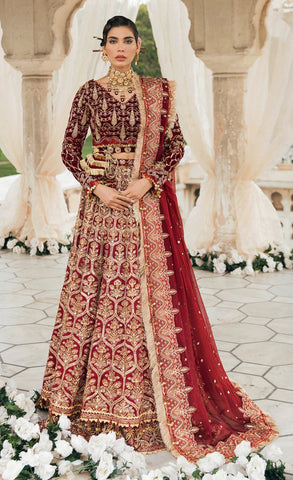Bridal Mehndi Designs: Tradition and Trend in Harmony

Mehndi, also known as henna, has been an integral part of bridal preparations in many cultures for centuries. This intricate art form involves applying henna paste to the bride's hands and feet to create beautiful, temporary designs. Over the years, mehndi has evolved to embrace both tradition and modern trends, making it an essential element of a bride's journey. In this blog, we'll explore the world of bridal mehndi designs, where tradition and trend coalesce to create stunning works of art for brides on their special day.
1. Traditional Designs
Traditional mehndi designs draw from cultural motifs and patterns. In Indian and Pakistani traditions, you'll often find paisley, peacock, lotus, and mango leaf patterns, all of which carry specific meanings and symbolism. These designs have stood the test of time and continue to be popular among brides.
2. Contemporary Fusion
Modern brides are increasingly choosing mehndi designs that blend traditional patterns with contemporary elements. This fusion allows them to honor their cultural heritage while adding a touch of personal style. It's not uncommon to see geometric shapes, abstract patterns, or even the couple's names cleverly integrated into the design.
3. Floral Delight
Floral mehndi designs are timeless and adaptable. Whether it's delicate roses, intricate daisies, or lush vines, flowers represent beauty and grace. These designs work well for both traditional and contemporary bridal looks.
4. Minimalistic Charm
Minimalist mehndi designs are a growing trend, especially among brides who prefer a subtle, understated look. Simple lines, dots, and small motifs on the fingers and palms provide a delicate touch without overwhelming the hands.
5. Intricate Details
Some brides prefer intricate and detailed mehndi designs that cover their hands and extend to the forearms and feet. These designs can include fine lines, latticework, and finely detailed patterns that are true works of art.
6. Ankle-to-Toe Mehndi
For a more elaborate look, some brides choose mehndi designs that cover their legs from the ankle to the toes. This adds an extra layer of beauty, especially if the bride's attire exposes her feet.
7. White Henna
White henna is a modern variation that uses a white paste rather than the traditional reddish-brown henna. It creates a striking contrast against the skin and can be used to add contemporary designs.
8. Glitter and Gems
To add a touch of sparkle, brides often incorporate glitter or gemstones into their mehndi designs. This is a popular choice for evening weddings, as it enhances the overall bridal look.
9. Matching with Bridal Attire
Brides often select mehndi designs that complement their bridal attire. This can include matching the colors or patterns of the dress, creating a harmonious and coordinated look.
10. Personal Significance
Many brides choose to include elements in their mehndi designs that hold personal significance, such as the couple's initials, meaningful dates, or symbols representing their love story.
Bridal mehndi designs have evolved to embrace both tradition and trend, giving brides the freedom to choose designs that reflect their individuality and style. Whether you opt for timeless traditional patterns or contemporary and personalized designs, mehndi adds a touch of artistry and beauty to your bridal look.
Disclaimer:
This blog may contain affiliate links, and we may earn a commission if you make a purchase through these links. Your support helps us continue to provide valuable content to our readers. Thank you for your support.

 For Orders
For Orders







Leave a comment